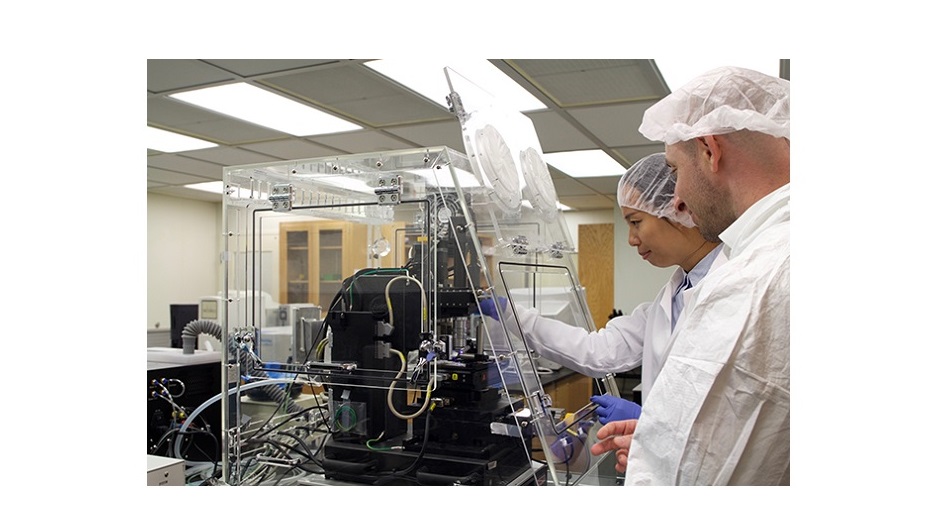In today’s technological age, 3D printing has become a common mechanism for creating new materials for multiple uses and functions. Yet, new generations of 3D printing machines are now moving into the realm of the fourth dimension, creating structures composed of multiple materials that either evolve in response to environmental stimuli or comprised of multiple components.
Dr. Adam Braunschweig, an assistant professor of chemistry at the University of Miami College of Arts and Sciences, and his research team have built a 4D printer able to create microscopic materials made up of different chemical compositions and in different positions along the glass surface of the printer, all while achieving feature dimensions on a nanoscale – 1/100000 the width of a human hair.
“3D printers exist today, but their dimensions are very large, and they print using only one color,” said Braunschweig. “We created a machine where we can make patterns and add features made of different chemicals and include a tool that can put these different objects right next to each other.”
Braunschweig, whose long-term goal is to build structures like a cell, molecule by moledcule, says the key to the chemical changes come from light bouncing to the tip arrays, or very small pyramids, that create the patterns.
“The longer we shine a light on the surface, the larger things grow,” he adds. “The microfluidic chamber in the printer allows us to add new chemicals in and out of the printer, which creates new patterns composed of multiple and different materials.”
The printer, which took about five years to complete and is a combination of chemistry and new instrumentation concepts, creates a final product only viewable with a microscope.
“We are printing things on a scale of just a few atoms,” adds Braunschweig, whose study published in Polymer Chemistry proves the validity of his 4D printer. “We proved this technology works and is out there. What you can create with this is only limited by the imagination of the user, but it’s a tool for doing chemistry and building structures the way nature does.”
The study titled “Optimization of 4D polymer printing within a massively parallel flow-through photochemical microreactor” is published in the journal Polymer Chemistry.
May 11, 2016

